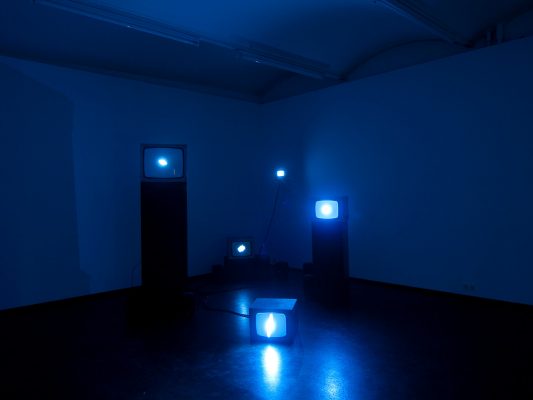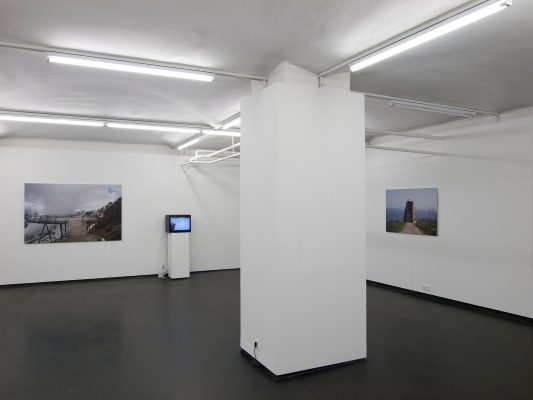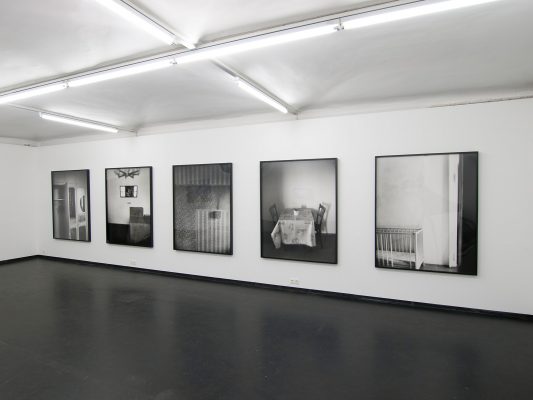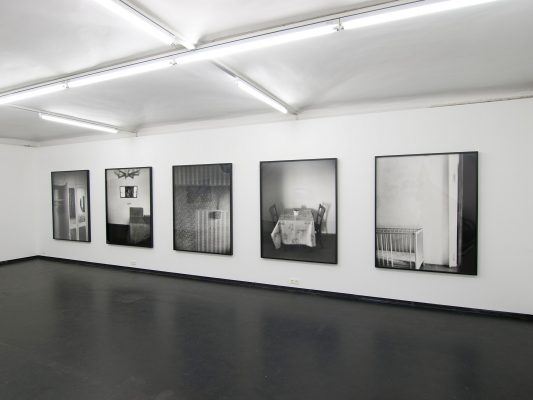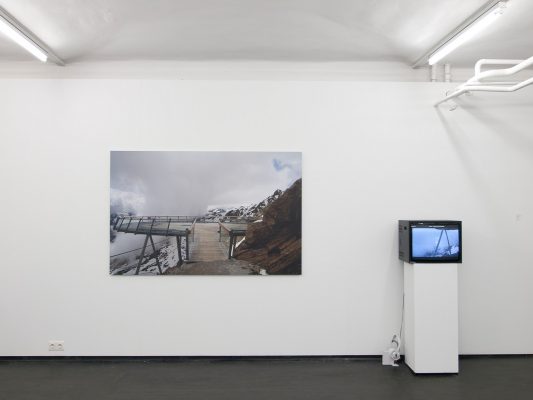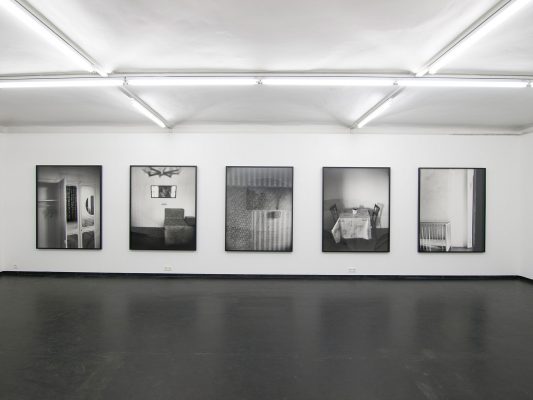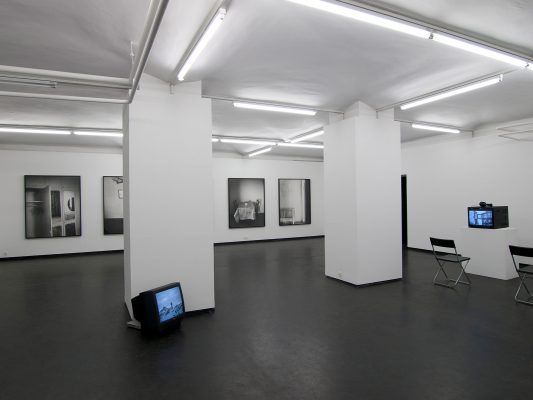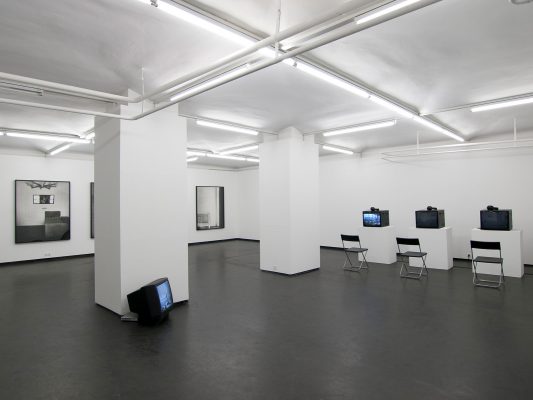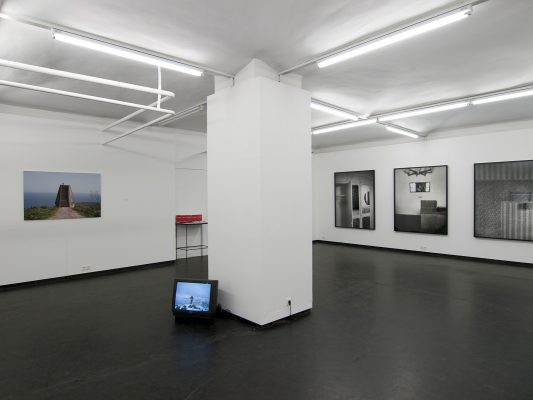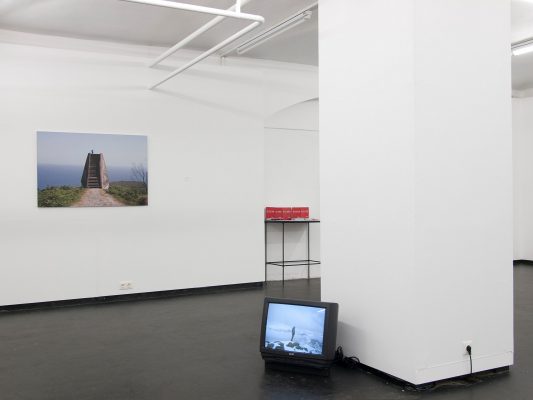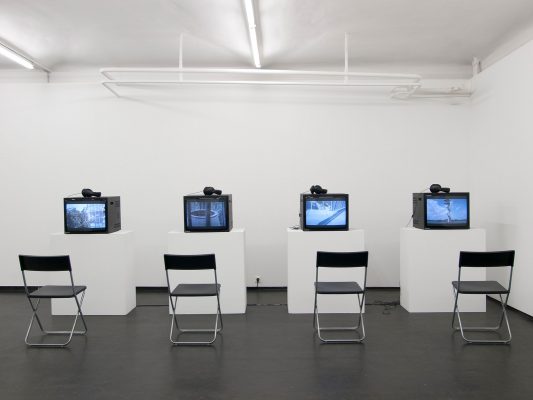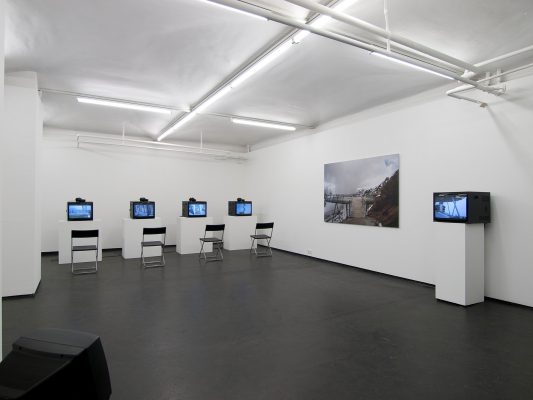Opening: November 9, 7pm
The exhibition Poiesis combines three contemporary artistic positions, whose works both capture and visually materialize the moment of the active search and discovery of the coincidental, like the poetic fusion of time and space.
The photographic cut creates, so to speak, new worlds. Reference is made to the moment of medial transformation of a condition, and to such concentrated visual modifications when what “is” becomes something else.
Michael Goldgruber questions levels of observation and pre-formulated perspectives of landscapes in the transfer to photographic image and installation. The panorama view and the natural spectacle are seen alongside the architecture of consumption. The guided view is intensified in Goldgruber’s artistic work resulting in experimental spaces of predetermined seeing. “While people in fact take to constructions and apparatuses to admire the view, what prevails in Goldgruber’s videos is the abyss and concrete, the paranoid babbles of voices and an eerie vastness. A smack of artificiality is always mixed in with the enjoyment of apparently authentic perceptions of nature.” (Nora Dejaco)
Michael Inmann examines the transitional states of deserted spaces. In the series left spaces, he captures the atmosphere of the void and of remnants with diffuse focal planes in his large format photographs. Beyond mere staging and by means of precise photographic settings, technology and procedures, the black and white photographs produce an image of abandonment in which realities of space begin to blur and a view of generalities is guided to that of the more specific. “Emotions are the starting point here: To begin with, I experience a space through emotion, through atmosphere. All other rational perceptions always follow. The momentum of time becomes a moment of space, the monument space becomes nothing other than pure light-time (Licht-Zeit).” (Carl Aigner)
In Heike Kaltenbrunner’s monitor/sound installation, Über das Leben und Sterben von Neutronensternen und T.V. Geräten, the artist transmits acoustic signals of pulsars to black and white televisions that have been converted to function as oscilloscopes. The resulting visual signals are reminiscent of the imagery of the universe. Through bundles of electron beams (or cathode rays), the machines gradually destroy themselves, expiring with a supernova. Together with sound and light, as well as the transformation of signal into action, Kaltenbrunner explores the boundaries of the perceivable and with the transfer of death, a common subject in Art History and Cultural Anthropology, to a technological level. “Heike Kaltenbrunner’s projects deal with consciousness, contemplation, the relationship between cosmically important and cosmically unimportant dimensions. With the cosmos as the main theme for art.” (Irina Tchmyreva)
